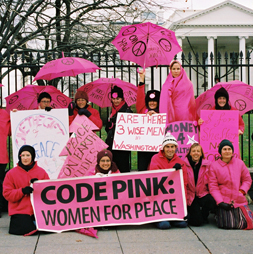- About
- Topics
- Picks
- Audio
- Story
- In-Depth
- Opinion
- News
- Donate
- Signup for our newsletterOur Editors' Best Picks.Send
Read, Debate: Engage.
| April 20, 2018 | |
|---|---|
| topic: | Women's rights |
| tags: | #women's rights, #suffragettes, #Theresa May, #gender equality, #Europe, #Emmeline Pankhurst |
| located: | United Kingdom |
| by: | Federica Tedeschi |
At the beginning of the 20th Century, the suffrage movement was in full swing. London became the epicentre of both the constitutional campaign and militant movement in 1906 after activist Emmeline Pankhurst moved to the capital the Women’s Political and Social Union (WSPU) she had set up nine years before in Manchester.
Pankhurst’s mantra was ‘Deeds not words’ in sheer contrast to previous National Union of Women’s Suffrage Societies (NUWSS), which believed change was still possible through peaceful and legal means.
Over 1,000 suffragettes answered to Ms Pankhurst and her daughter’s call to take militant action and get their point across. They disrupted society and proved they could fight on their own terms, not without pain, though. During those years suffragettes were not only discredited and shamed but also arrested and imprisoned. Women were given disproportionately long sentences for minor offences such as protesting, resisting arrest or smashing a window.
HMR Holloway, where militant suffragettes were incarcerated, and went on hunger strike and were savagely force-fed was the largest female-only prison in western Europe until its closure in 2016 remains one of the most significant locations within the history of the suffragette movement.
Helen Pankhurst, who is continuing the legacy started by her great-grandmother through her role of international development and women’s rights activist, led speeches during the Representation of the People Act centenary opening ceremony. The event took place in Manchester, in the Victorian drawing room where the WSPU was formed.
The only woman in the Pankhurst family who is still alive explained how hard it is to fully understand the psychological effect of repeated imprisonments and force-feeding on the women who were prepared to go to prison to vote.
“But another way of seeing it is how the suffragettes represented the complexity of the struggle,” she pointed out.
The campaign for the women’s right to vote is generally presented as a women-only protest. Instead, suffragettes were supported by suffragists, a group of men and women who campaigned and debated to argue for gender equality.
This year the UK marks the Suffrage Bill centenary with a plethora of initiatives up and down the country, taking place throughout 2018.
People can learn details of this milestone moment in history, by taking part in exhibitions, talks, walks and workshops not just in Manchester, then. A Museum of London’s exhibition, for instance, features iconic objects from the museum’s vast suffrage collection, including Emmeline Pankhurst’s hunger strike medal. They also organise a guided tour of the city on a vintage Routemaster bus exploring key places and stories from the suffrage movement. Meanwhile, Westminster Hall is organising a major summer exhibition to explore the impact of women on parliament over the last 200 years.
Oxford, on the other side, is organising a promenade performance by the Young Company, which looks at the fights for women’s right, and the list goes on. Theresa May, the second woman Prime minister in the British history, spoke to the BBC in occasion of the Suffrage Bill centenary in Manchester last month:
“A century ago the home secretary and director of public prosecutions were grappling with the direct actions of suffragettes. Today both those offices are held by women”.
Talking about nowadays society, the PM stressed that injustices against women are not rare and discrimination also affects LGBT people and ethnic minorities as well as people from poor families and disables.
“But if we cast our eyes back to well within living memory, we can see just how far we have come. These improvements have been achieved through free and open debate, leading to progressive, democratic change,” Ms. May added.
Thinking about modern feminism, Helen Pankhurst stressed that different strands can help bring victories and this is what happened within the suffragette movement. “Every different faction contributed to winning the vote”, she said.
Curiosities
- Christina Broom, who was the UK’s first woman press photographer is also author of most of the picture contained in the Suffragettes’ extensive archives of images.
- Long before the approval of the Representation of the People Act, Henry Smith presented the first petition for the vote of women on behalf of Mary Smith, who argued her right to vote as she paid taxes and was subject to law. It was 1832 and the petition was laughed out at the House of Common.
By copying the embed code below, you agree to adhere to our republishing guidelines.
